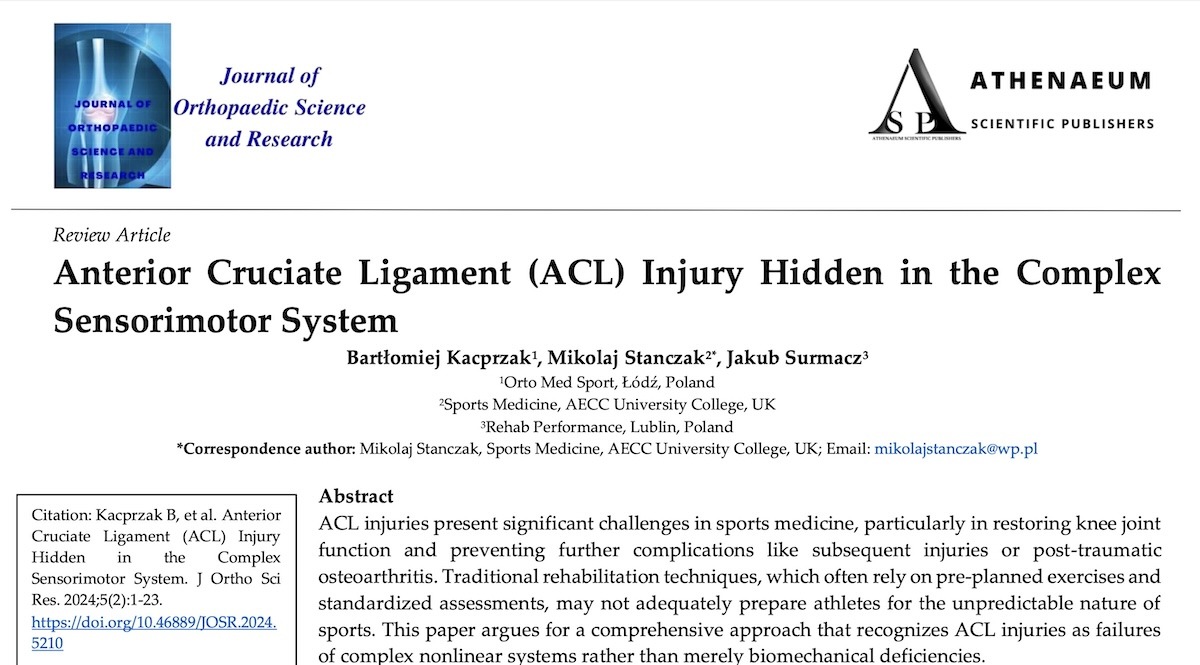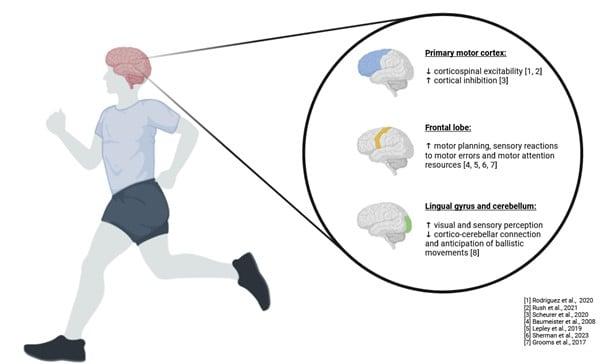Anterior Cruciate Ligament (ACL) Injury Hidden in the Complex Sensorimotor System
Navigation:
- How do I find a good ACL physical therapist?
- How do I find a good ACL doctor?
- Zamst
- Why are so many female footballers suffering ACL injuries?
- Aspetar Clinical Practice Guideline on rehabilitation ACLR
- Melbourne ACL Rehabilitation Guide
- HOW an athlete returns is more critical than WHEN
- Anterior Cruciate Ligament (ACL) Injury Hidden in the Complex Sensorimotor System
- ACL Reference Values
- Psychological readiness
- Virtual Reality and Artificial Intelligence: Transforming Injury and ACL Rehabilitation
- ACL rehab staying motivated
- The Team ACL effect
- Keiser
- Game Ready Pro 2.1.
- Compex
- ACL reconstruction rehabilitation: decades of change
- Reference values for quadriceps and hamstrings strength & double- and single-leg jump tests
- Return to running too quickly after ACL surgery
- Blood Flow Restriction Training in ACL Rehab
- Interview TeamACL professional Luis Escudero
- Influence of female sex and graft choice on the incidence of cyclops lesions after ACL reconstruction
- 10 Mistakes why ACL rehab regularly fails
- Isokinetic testing after ACL rehabilitation in football players
- Return to sports after an ACL reconstruction in 2024
- Latest content
Anterior Cruciate Ligament (ACL) Injury Hidden in the Complex Sensorimotor System
ACL injuries present significant challenges in sports medicine, particularly in restoring knee joint function and preventing further complications like subsequent injuries or post-traumatic osteoarthritis. Traditional rehabilitation techniques, which often rely on pre-planned exercises and standardized assessments, may not adequately prepare athletes for the unpredictable nature of sports. This paper argues for a comprehensive approach that recognizes ACL injuries as failures of complex nonlinear systems rather than merely biomechanical deficiencies.
The complexity of ACL injuries involves a dynamic interplay of individual skills, team dynamics and external conditions. Traditional rehabilitation approaches that focus solely on biomechanical factors overlook the critical role of interpersonal dynamics and sensorimotor control. The brain’s integration of sensory information to form a comprehensive environmental representation is vital for motor actions. Disruptions in this sensorimotor feedback loop can impair motor control, increasing the risk of ACL injuries.
Effective rehabilitation should enhance sensory integration and feedback mechanisms, improving motor control and reducing re-injury risk. Addressing proprioceptive deficits and Arthrogenic Muscle Inhibition (AMI) is crucial for successful rehabilitation. Neurocognitive training, focusing on enhancing decision-making and motor responses, is essential for sports performance and injury prevention. Techniques like neurofeedback training can optimize brain activity patterns, leading to better motor responses and adaptation to dynamic environments.
Psychological factors such as motivation, anxiety and fear significantly influence recovery. Integrating psychological support into rehabilitation programs can address these factors, leading to more comprehensive and effective recovery strategies. Innovative rehabilitation approaches, including EMG biofeedback, motor imagery and virtual reality-based training, can enhance reactive motor planning and adaptability, preparing athletes for the demands of their sport.
The future of ACL rehabilitation lies in embracing the complexity of the sensorimotor system and developing multidisciplinary interventions that promote beneficial neuroplasticity. Advances in neuroscience and technology, such as artificial intelligence, can lead to more personalized and effective rehabilitation programs. Recognizing and addressing the multifaceted nature of ACL injuries can significantly improve rehabilitation outcomes, ensuring athletes can safely and effectively return to their sports.
Our current therapeutic approaches fall short in adequately restoring knee joint function, preventing subsequent injuries and staving off post-traumatic osteoarthritis. This shortcoming highlights a significant gap in our rehabilitation methods, which often rely on largely pre-planned techniques and standardized test batteries. These methods, while systematic, fail to account for the unpredictable and dynamic nature of sports, as emphasized by dynamic systems theory. The chaotic environment of sports requires a more adaptive and responsive approach to rehabilitation, one that can quickly adjust to the varying demands placed on athletes.
“ ”
Somatosensory Afferents: What Happens to ACL Mechanoreceptors After Injury?
Reference: Mikołaj Stańczak


